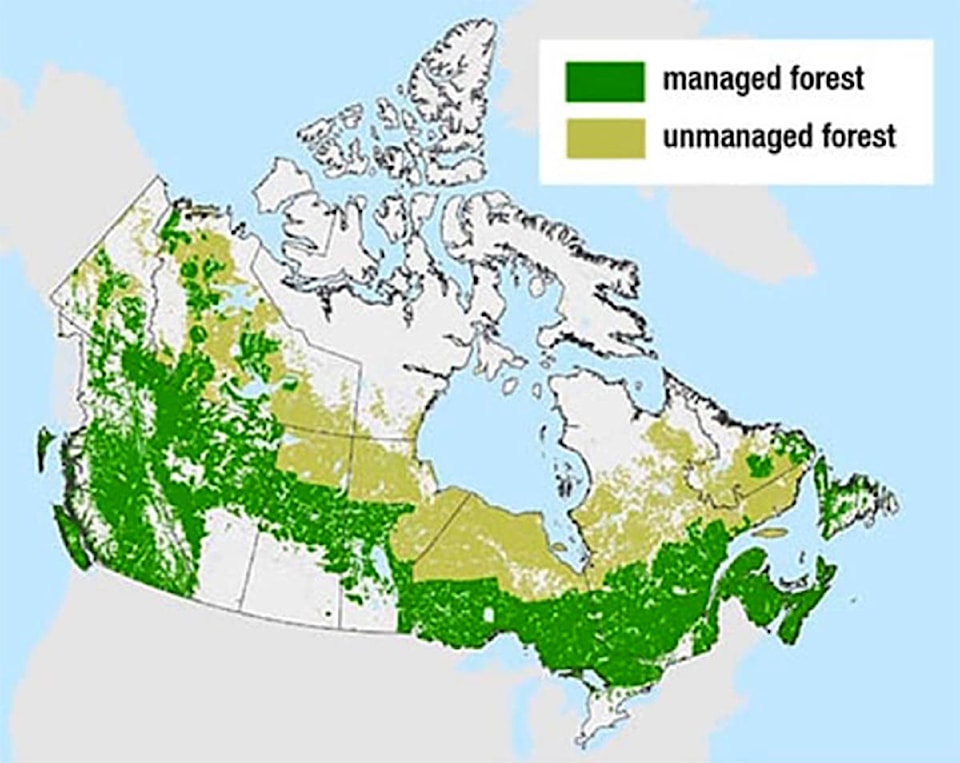While Canadians and our neighbours to the south don’t have a great track record when it comes to the annual use of hydro carbons on a per-capita basis we can point out that our vast forests were helping as a carbon sink for the stabilizing of green house gases.
A recent study casts some doubts on this conclusion, at least when our forests are partitioned into two groups which are the managed forests of the south and the lesser productive unmanaged forests of the north.
READ MORE: Impact of fires on range and wildfire values
According to part two of Canada’s “2018 National Inventory Report 1990–2016 “when you add up both the absorption and emission, Canada’s managed forests haven’t been a net carbon sink since 2001.” Due largely to forest fires and insect infestations, the trees have actually added to our country’s greenhouse gas emissions for each of the past 15 years on record. The report also contains details of the new approach of determining forest carbon sink amounts, which has been in use since 2017. Note the “Montréal Process Criteria and Indicators (Fourth Edition, 2015).”
To be fair when the natural disturbances like insects and wildfires are excluded, the managed forests are a consistent carbon sink. The “sink” effect is largely the result of new trees being planted and growing, after mature ones are cut down. The harvested lumber and to a lesser extent chips for paper, releases its carbon to the atmosphere more slowly. The eventual decomposition of lumber products is actually included as part of our greenhouse-gas accounting.
How much sequestration is taking place in the northern unmanaged forests? I would think considerably less because of the much lower forest productivity. While the forest land stores less the surrounding wetlands may be a major carbon sink. Research is ongoing to quantify the carbon-storing potential of peatlands. These are types of wetland systems made up of bogs and fens. The Geological Survey of Canada says peat in Canada’s wetlands stores almost 60 percent of all carbon stored in soils across the country.
READ MORE: Plenty of areas to study to create fire breaks
Peatlands may take several millenia to accumulate organic material that maintains a very slow rate of decomposition,” says Alain Richard, Head of Boreal Conservation Partnerships and Services for Ducks Unlimited. “Because of that, it is accumulating more carbon than decomposing, resulting in these wetland types functioning as a net carbon sink.”
Peatlands can be 40 centimetres to several metres deep. They are in a variety of places, including areas with permafrost which remain frozen all year.
“When peatland systems remain wet, cool or frozen, it really reduces the rate of organic decomposition, resulting in a net annual accumulation of carbon being stored and thereby functioning as carbon sinks ... With the unprecedented warming taking place in the north peatlands start to dry up or permafrost starts to melt causing these systems to become a source of carbon where greenhouse gases like methane are emitted into the atmosphere.”
While we may not be able to do much regarding insects and natural wild fires there are still areas like burning residual logging debris that could be used for power of wood pellets that could help reduce our green house gas output and create needed forest related jobs.
Canada’s managed forests were a net contributor of roughly 78 megatonnes of emissions in 2016, the most recent year on record.
Jim Hilton is a professional agrologist and forester who has lived and worked in the Cariboo Chilcotin for the past 40 years. Now retired, Hilton still volunteers his skills with local community forests organizations.
